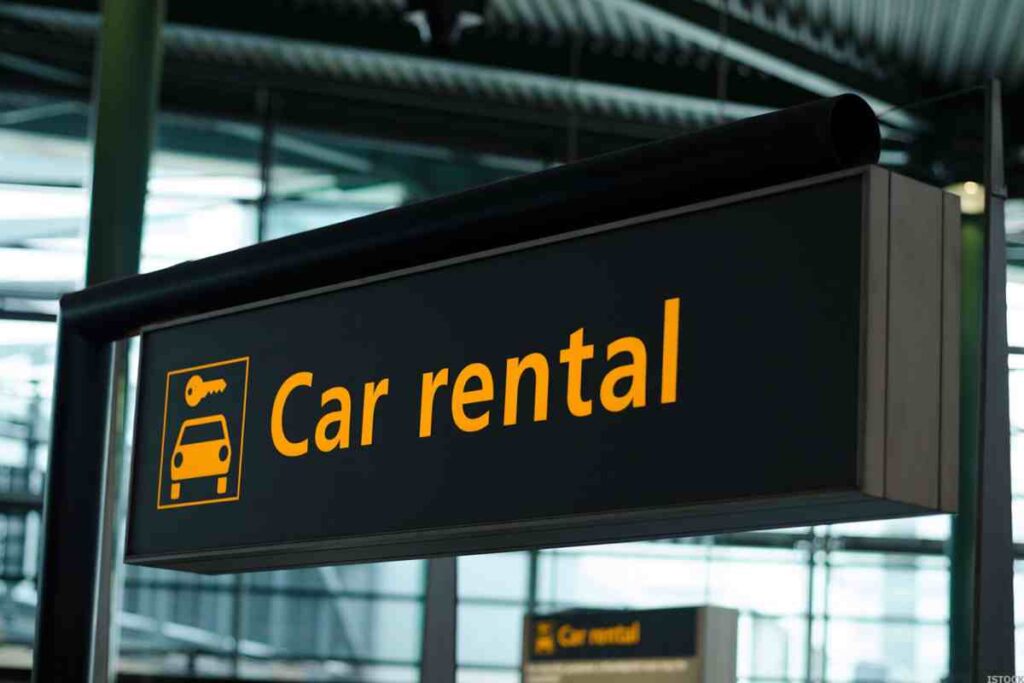Navigating the aftermath of a car accident can be daunting, especially when you’re deemed at fault. Understanding how car insurance works in such scenarios is crucial for any driver. This article aims to demystify the complexities of at-fault car insurance claims and guide you through the process. From the intricacies of liability coverage to the nuances of state laws, we’ll explore what happens to your insurance when you’re responsible for an accident. Whether it’s dealing with increased premiums or understanding your policy’s fine print, we’ve got you covered.

Types of Coverage
When discussing the types of coverage in car insurance, especially when the driver is at fault, it’s important to explain the following key coverages:
- Liability Coverage: This is the most basic form of car insurance and is mandatory in many places. It covers the costs associated with damage and injury to others if the policyholder is at fault in an accident. This includes both property damage and medical expenses for third parties.
- Collision Coverage: Collision coverage helps pay for the repair or replacement of the policyholder’s car if it’s damaged in an accident with another vehicle or object, regardless of who is at fault.
- Comprehensive Coverage: This coverage is for damage to the policyholder’s car that is not caused by a collision. It can include events such as theft, vandalism, fire, natural disasters, and hitting an animal.
- Personal Injury Protection (PIP): Also known as no-fault insurance, PIP covers medical expenses for the policyholder and their passengers regardless of who caused the accident. It can also cover other costs like lost wages and rehabilitation expenses.
- Uninsured/Underinsured Motorist Protection: This coverage protects the policyholder if they’re in an accident with a driver who doesn’t have enough insurance or any at all. It can cover both bodily injury and property damage.
Each type of coverage has its own nuances and regulations, which can vary by location and the specific terms of the policy.
Deductibles and Premiums
When you’re at fault in a car accident, it can have a significant impact on your insurance deductibles and premiums. Here’s how:
Deductibles: This is the amount you pay out of pocket before your insurance covers the rest. If you’re at fault, you’ll be responsible for paying the deductible amount. Choosing a higher deductible can lower your premiums, but it means more out-of-pocket costs when an accident occurs.
Premiums: After an at-fault accident, your premiums are likely to increase. This is because you’re now seen as a higher risk to the insurance company. The rate of increase can vary based on factors like your driving history, the severity of the accident, and your location. On average, premiums can rise by nearly 50% following an at-fault accident.
It’s important to understand these concepts as they directly affect the cost of your insurance and your financial responsibility after an accident.
State Laws and Regulations
When discussing the state laws and regulations for car insurance in the USA, you might want to cover the following points:
- State-Specific Laws: Each state has its own set of laws that govern auto insurance. These laws are enacted to prevent predatory practices and ensure fair treatment, while also establishing a baseline of financial responsibility for drivers.
- Mandatory Insurance: In most states, federal car insurance law states that all drivers must secure some type of insurance policy in order to be able to drive a vehicle. The purpose of car insurance is to protect drivers against property damage and injury expenses that can occur as a result of a car accident or claim.
- Minimum Required Liability Coverage: State-specific mandates determine the minimum levels of coverage needed to legally operate a vehicle. These regulations are designed to protect not just the driver, but also other motorists and pedestrians.
- Uninsured and Underinsured Motorist Coverage: Some states require policies that include uninsured motorist coverage to protect against the financial impact of an accident with an uninsured driver.
- Insurance for Leased or Financed Vehicles: If your vehicle is leased or financed, the full coverage auto insurance requirements of your loan or leasing company apply.
- State-Specific Risks: Insurance requirements are carefully calibrated reflections of each state’s unique risks and conditions. For example, a state with a high volume of urban traffic may impose higher liability coverage requirements to account for the increased likelihood of accidents.
Accident Reporting
Reporting an accident to your insurance company is a crucial step in the claims process. Here’s a general outline of the steps involved:
- Immediate Notification: As soon as possible after the accident, contact your insurance provider’s claims department. This can typically be done via phone, online portals, or mobile apps.
- Provide Details: Give all relevant details about the incident, including time, location, involved parties, and the nature of injuries or damages. If possible, include photos of the scene.
- File a Claim: Complete the online claims forms or provide the necessary information over the phone to file a claim.
- Documentation Submission: Submit any required documents that support your claim. This may include a police report, photographs of the damage, repair estimates, and medical records if there are injuries.
The importance of documentation cannot be overstated. Proper documentation serves as evidence of the loss or damage and is essential for supporting the value of your claim. Without it, the insurance company may deny your claim or offer a lower settlement. Documentation can include photos, videos, receipts, appraisals, and reports that detail the incident and its aftermath. It’s crucial to keep detailed records and receipts related to the accident, as they will be needed during the claims process.
Is Insuring An Electric Car More Expensive?
Organized and clear documentation not only expedites the claims settlement but also ensures accuracy and fairness. It provides proof of the loss, such as photographs, invoices, and detailed incident reports, which are vital for both the policyholder and the insurer to establish the legitimacy of the claim.
Claim Process

The car insurance claims process can be intricate, but it generally follows these steps:
1. Immediate Notification: Contact your insurance company as soon as possible to report the accident. Use their toll-free number, email, or mobile app.
2. Claim Form: Fill out a claim form provided by your insurer. This will include details about the accident and the extent of the damages.
3. Documentation: Submit all necessary documents, such as the police report, photographs of the accident, and repair estimates.
4. Vehicle Inspection: An insurance adjuster or surveyor will inspect your vehicle to assess the damages and determine the cost of repairs.
5. Repair and Settlement:
- Cashless Claim: If you choose a network garage, the insurer will directly settle the bills with the garage.
- Reimbursement Claim: If you go to a non-network garage, you’ll pay upfront for the repairs and then get reimbursed by the insurance company upon submitting the bills.
6. Claim Resolution: The insurance company will review all the information and decide on the claim. If approved, they will issue payment as per the policy terms.
Do I Need Insurance Before I Buy A Used Car?
Remember, the specifics can vary based on your insurance provider and policy. It’s essential to understand your policy’s details and follow your insurer’s guidelines for a smooth claims process.
Impact on Driving Record
An at-fault accident can have a lasting impact on your driving record, which in turn can affect your car insurance rates. Here’s what you should know:
- Record Duration: The length of time an at-fault accident stays on your driving record varies by state. For example, in California, it remains for three years, while in Oregon, it could stay for five years or more.
- Insurance Rates: Insurers view drivers with at-fault accidents as higher risks, which often leads to increased premiums. The rate hike can depend on factors like the accident’s severity, your age, and your overall driving history.
- Points System: Many states use a points system to track driving infractions. At-fault accidents typically add points to your license, which can lead to higher insurance costs, and in severe cases, license suspension.
- Long-Term Effects: Even if no points are assigned for minor incidents, they still remain part of your permanent driving record and can influence insurance rates and coverage eligibility.
Understanding how at-fault accidents affect your driving record is crucial for maintaining good standing with insurance providers and managing your insurance costs effectively.
Tips for Safe Driving
Safe driving is essential for protecting yourself and others on the road. Here are some tips to help you drive safely:
- Wear Your Seatbelt: Always buckle up before driving, and ensure all passengers do the same. Seatbelts can save lives and reduce the risk of injury during an accident.
- Follow Speed Limits: Adhere to speed limits as they are set for your safety. Higher speeds make it harder to control your vehicle and increase the risk of accidents.
- Avoid Distractions: Keep your focus on the road. Avoid using mobile phones, loud music, or any other distractions that could impair your reaction time.
- Maintain a Safe Distance: Keep a reasonable distance from the vehicle in front of you to allow enough time and space to react if it suddenly stops.
- Obey Traffic Signals: Respect traffic lights and signs. They are designed to manage the flow of traffic and prevent accidents.
- Service Your Vehicle Regularly: Ensure your vehicle is in good working condition. Regular maintenance can prevent breakdowns and accidents.
- Use Turn Signals: Always indicate your intentions to other drivers when turning or changing lanes to avoid confusion and collisions.
- Drive Sober: Never drive under the influence of alcohol or drugs. Impaired driving significantly increases the risk of accidents.
- Be Well-Rested: Avoid driving when tired. Drowsiness can slow your reaction time and impair judgment.
- Adapt to Conditions: Adjust your driving for different road and weather conditions. Slow down in rain, snow, or fog to maintain control of your vehicle.
How to Get Auto Insurance Before Buying A Car?
By following these tips, you can contribute to a safer driving environment for everyone on the road. Drive responsibly and stay alert at all times.
Saving Money on Car Insurance
Saving money on car insurance after being at fault in an accident can be challenging, but it’s not impossible. Here are some strategies that may help:
- Review Your Policy: Look at your current coverage and see if there are any adjustments you can make that could lower your rates. This might include increasing your deductible or dropping certain coverages that may no longer be necessary.
- Check for Discounts: Many insurance companies offer various discounts, such as for safe driving, multiple policies, or having a car with safety features. Make sure you’re taking advantage of all the discounts you’re eligible for.
- Drive Safely: By maintaining a clean driving record after the accident, you can gradually reduce the impact of the accident on your premiums. Some insurers offer accident forgiveness programs that might prevent your first accident from affecting your rates.
- Take a Defensive Driving Course: Some insurers offer discounts to drivers who complete an approved defensive driving course. This can also help to improve your driving skills and reduce the likelihood of future accidents.
- Shop Around: Don’t hesitate to shop around for new quotes from different insurers. Rates can vary significantly between companies, and you might find a better deal elsewhere.
- Bundle Policies: If you have multiple insurance policies, consider bundling them with the same provider for a discount. This can include home, renters, or other types of insurance.
- Consider Usage-Based Insurance: If you don’t drive often, a usage-based insurance program could save you money. These programs base your rates on how much you drive and how safely you drive.
Remember, the key is to demonstrate to insurers that you are a responsible driver, despite the at-fault accident. Over time, this can help mitigate the increase in your premiums.
FAQs
Q 1. What should I do immediately after an at-fault accident?
Ans. Immediately after an at-fault accident, ensure everyone’s safety and call emergency services if there are injuries. Exchange information with the other party, document the scene with photos, and notify the police. Contact your insurance company to report the accident as soon as possible.
Q 2. Can I still file a claim if I am at fault in an accident?
Ans. Yes, you can still file a claim with your insurance company if you are at fault. Your liability coverage will pay for the other party’s damages, and collision coverage (if you have it) will cover your vehicle’s repairs, minus your deductible.
Q 3. Will my insurance rates go up even if the accident damage is minor?
Ans. Yes, insurance rates can still go up after an at-fault accident, even if the damage is minor. The increase depends on your insurer’s policies, your driving history, and the specifics of the incident.
Q 4. How can I dispute a fault determination by my insurance company?
Ans. To dispute a fault determination, gather evidence such as witness statements, photos, or videos that support your case. Present this information to your insurer and, if necessary, seek legal advice or mediation.
Q 5. What is the difference between at-fault and no-fault when it comes to insurance claims?
Ans. In at-fault states, the driver who caused the accident is responsible for damages. In no-fault states, each driver’s insurance covers their own injuries regardless of who caused the accident.
Q 6. How long will an at-fault accident stay on my insurance record?
Ans. The duration varies by state, but typically, an at-fault accident can stay on your insurance record for three to five years.
Q 7. Can I switch insurance providers after an at-fault accident?
Ans. Yes, you can switch insurance providers after an at-fault accident, but be aware that your accident history will be considered by the new insurer when determining your rates.
Conclusion
In conclusion, understanding how car insurance works when you’re at fault is crucial for every driver. It not only helps you navigate the aftermath of an accident more effectively but also ensures you’re adequately protected against potential financial liabilities.
Remember, the laws and regulations regarding car insurance vary significantly from state to state, so it’s essential to familiarize yourself with the specific requirements in your area. Always maintain adequate coverage and drive safely to avoid accidents and keep your insurance premiums low. Remember, insurance is not just a legal requirement—it’s a critical safety net that protects you, your vehicle, and others on the road.

Join Shubham, a finance enthusiast with a mission to empower readers with the knowledge and tools to achieve financial freedom. Discover smart financial advice and unlock your financial potential.


